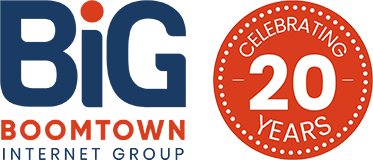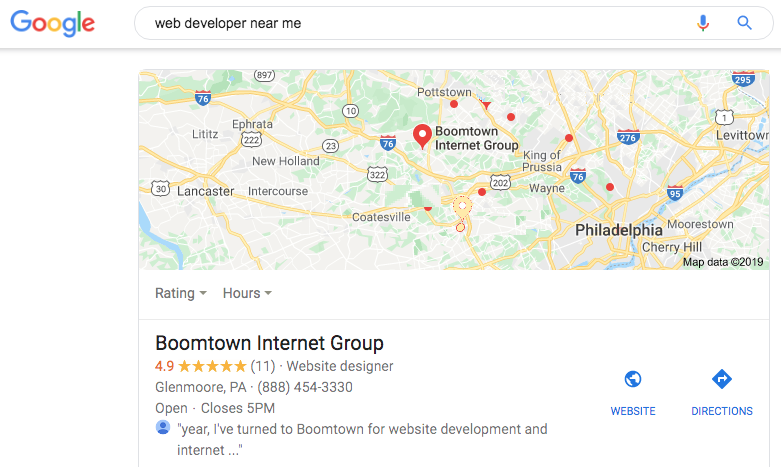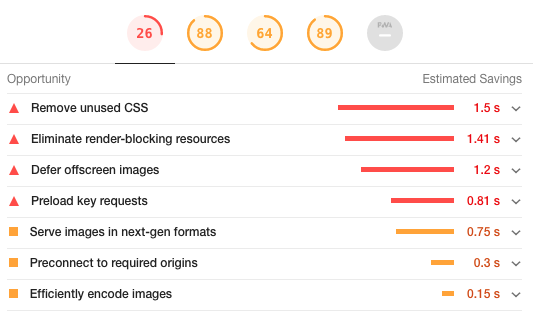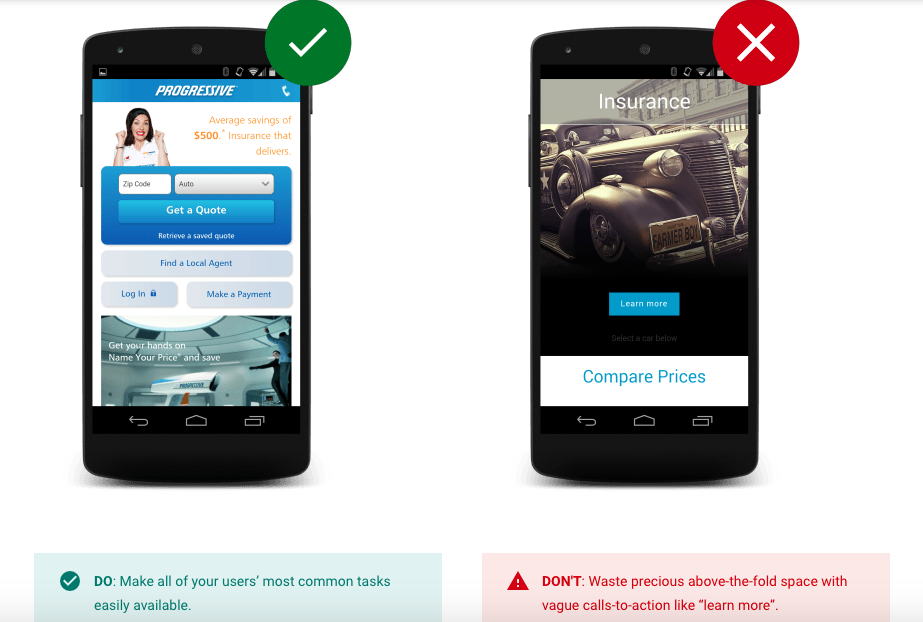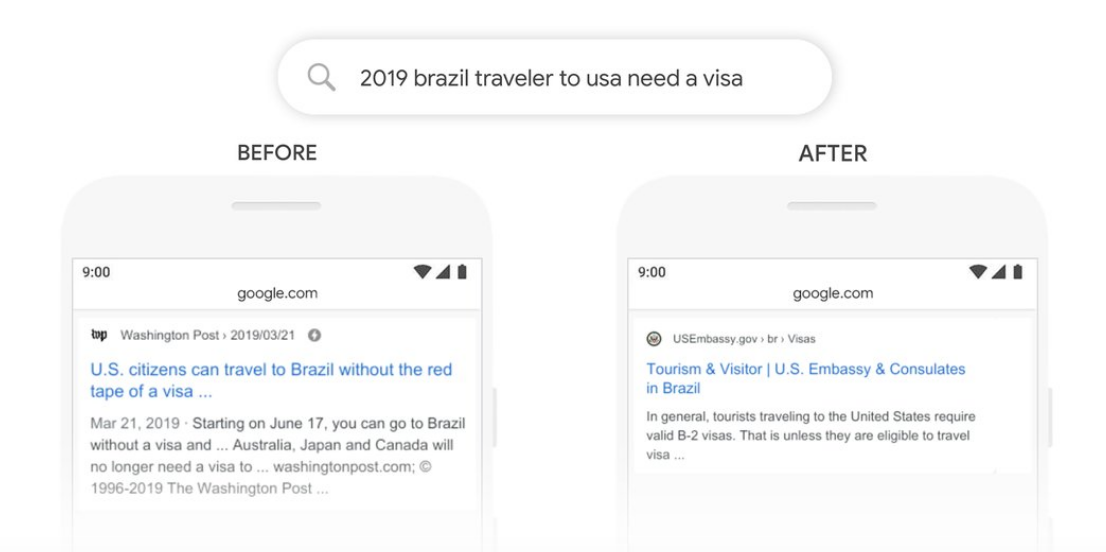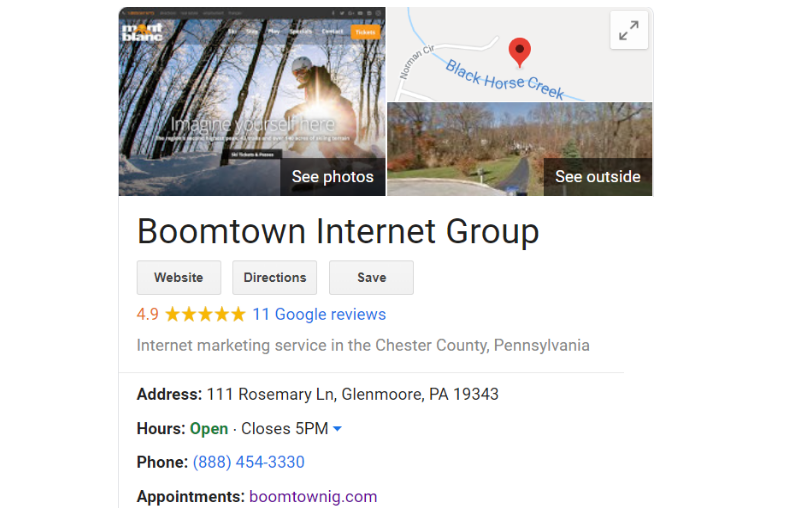This week we are focused on local SEO – businesses that want to show up in a specific geographic area or for a “near me” search.
Here are a few local SEO tips that will make a big difference in your local rankings:
- Speed up your site
- Optimize for mobile
- Have the best content possible
- Implement local schema markup
- Optimize Google My Business
- Inspire user reviews
- Ensure consistent local listings (NAP) – Especially Facebook, Bing and Apple Maps
Speed Up Your Site For Better Local Search Rankings:
After the Google mobile speed update in 2018, page speed has increased in importance in search rankings. After all, Google doesn’t want to show search results of sites that don’t open quickly. Google has the data showing that a searcher will just move onto another site quickly.
Google summed it up nicely: “How fast your website loads is critical but often a completely ignored element in any online business … And that includes page load times on mobile devices: The average time it takes to fully load a mobile landing page is 22 seconds, according to a new analysis. Yet 53% of visits are abandoned if a mobile site takes longer than three seconds to load. That’s a big problem.” Google
In every subsequent Google algorithm update, page speed has factored heavily in search results.
If you want to test your web page speed you can use Google’s PageSpeed Insights.. This test uses the Chrome browser and Lighthouse tool. Here is a link to their score weighting sheet. It measures First Contentful Paint (FCP) or the time it takes a browser to receive the first byte of information about a web page from the web server, and DOMContentLoaded (DCL) or the time it takes to show all content on a page. From an SEO standpoint, it is very important to improve the FCP. We also suggest using GTMetrix to test your page speed as well as the Google tool so that you get further insight into what is slowing down the page load.
Example from Chrome Audit Tool Summary Report
While your page speed report will have specific suggestions for your site, here are some of the many ways to increase general page speed, that you can share with your web developer:
- Compress the size of your HTML, JavaScript, and CSS if these are larger then 150 bytes.
- Minify CSS, JavaScript, and HTML (remove unnecessary characters, comments, and formatting in your code)
- Check all the tags on your page and make sure you need all of them. Sometimes tags are added and never removed when their use is over.
Remove redirects by fixing the link at the source – redirects increase load time - Get rid of anything that stops the browser from parsing the HTML before it renders the page (ie JavaScript).
- Check your browser caching settings – most sites can cache a lot of information by setting a long expiration date on the cache. Google has more information about leveraging caching here.
- Improve server response time – maybe start using a content distribution network (DCN) We recommend Cloudflare to distribute the load of delivering content.
- Make sure you are using the latest versions of software such as PHP.
- If your site has a database, make sure it is compressed frequently.
- Optimize images using tools and services here. We have had success using https://kraken.io/ and https://squoosh.app/. Make sure you are using the right type of image. For instance, PNGs with fewer than 16 colors are better for graphics and JPEGs are better for photos. You can use CSS sprites to combine and load images all at once. Also be aware of Lazy Loading Images and Video. You can read about Lazy Loading here. It is the strategy to load videos as needed, freeing up resources while the page loads and sometimes never loading the image of video if the user doesn’t reach the section containing the video or image.
Boomtown Internet Group can help analyze and fix your page speed problems for a boost in local organic traffic.
Optimize for Mobile for Better Local Search Rankings
In 2017 Google disclosed that it now uses only the mobile algorithm to rank websites for search. Since that time, every update has incorporated mobile speed and mobile best practices as significant ranking factors.
Why is Google focused on mobile? The trends in mobile internet use outlined by Techjury.net point to more and more transactions made on mobile devices, more searches made on mobile devices, and more ad dollars produced by mobile devices.
To check whether your site is optimized for mobile, use Google’s Mobile Testing Tool in conjunction with other tools like GTMetrix.
Example from Google Blog on What Makes a Good Mobile Site
Follow the Google Developer’s What Makes a Good Mobile Site document, which outlines 25 design principles in five major categories. Sites need to load quickly and be easier to navigate and use. As more and more people use their phones to browse the internet, mobile importance grows. It may pay to update the theme of your website in order to increase usability and speed, even if the majority of your site visitors are not finding you on mobile devices yet.
Have the Best Content Possible for Better Local Search Rankings
Google wants to provide search results that best answer questions. With Google’s latest AI algorithm update called Bidirectional Encoder Representations from Transformers (BERT), Google’s bot begins to understand what words in a sentence mean in context. For example, if your page does not provide comprehensive answers to questions, it will fall in the rankings.
Example from Google Blog on BERT
https://www.blog.google/products/search/search-language-understanding-bert/
When you read a web page and don’t immediately understand the intent of the page, it’s a good sign that BERT won’t understand it either. Pages should be written to emphasize the important points you want to portray, use clear language structure, present all the possible content a person needs to understand the topic, and have clear links to pages that further breakdown information.
Information on your website should be verified and not copied. Wherever possible include citations, and refrain from repeating information on the page or within the site. If your content is well organized and focused, BERT presents an opportunity for your site to show higher for searches that will bring more and better-targeted visitors.
Implement Local Schema Markup
Local data markup (schema), when done correctly, can help a web page show up in Google answer boxes and rich snippets – above all the search results. Google developers have created a document outlining the schema for local web pages here.
What exactly is local schema markup? A while back Google, Bing, and Yahoo got together and created tags to better understand certain categories of data on websites. They call this tag system “schema” markup data, or “rich snippets”. The relevant categories of information for local search revolves around data classified as business name, address, phone number, event dates and times and more. By tagging, this local information on your web pages with schema search engines can display data in a better way for easy digestion by searchers.
Example of the schema used in search results showing business name, address, and phone number.
If your schema meets Google’s guidelines and correctly leads Google to understand the intent of the page, it will rank higher in local search. You can use Google’s structured data testing tool to check the schema on your pages.
If your site is WordPress you may the Schema Plugin to add schema because it supports listed Schemas out of box, but for more exotic schema you may have to write some code. You can see all possible supported schema here. Please note that Google prefers using JSON-LD for structured data.
Optimize Google My Business for better local SEO rankings
Google My Business (GMB) is a free map listing and greatly helps with local SEO and rankings. The search results show businesses nearby with a description, photos, hours of operation, categories, reviews, contact information, and other pertinent information. Optimizing your local business GMB is very important in order to show up on “near me” type searches. There have been numerous articles about how best to optimize a GMB listing. Our advice is to be consistent and accurate with all business information across all the listings about your business, including your own website, so there are no differences. For example, using your business name followed by a comma and Inc. can change the way Google perceives a business name and cause a problem with your listing. Be very consistent.
It is fairly easy to keep your GMB current by updating it frequently. Add:
- Photos of your business (interior and exterior)
- Keep services and products current
- Showcase events associated with your company
- Keep hours updated for holiday closings
- News about your company
- Links to recent articles or other media
As an example of Google My Business best practices, visit Boomtown Internet Group’s listing.
Inspire User Reviews
Google reviews inspire trust in your visitors, and Google acknowledges that it is very important to encourage your customers to leave reviews and also to respond to every review. Of course, you have to have a verified Google My Business first. Some people worry that their competitors will read reviews and contact the reviewers, attempting to recruit them as prospects. If the client left a good review, it is unlikely they will jump ship. Here are some tips for inspiring positive reviews.
It is best to ask for a review when you know the customer is happy with your service or product. For instance, don’t ask for a review too soon and don’t wait too long. You know your services and products and can likely figure out an optimal time to ask.
Make sure to personally ask for a review whenever possible, and make sure to let your customers know this is a huge favor and you are very thankful. You can also let them know how long the review will take and what will be involved. Additionally, you can remind them about the services and products they experienced as your customer and ask them to try to include that information in their review so that others know your specific strengths.
It is very important that after a customer leaves a review that you immediately thank them or address any issues they indicated in the review. There are options for you to flag a review in GMB to eventually have Google take it down if the review is not relevant to your business.
Ensure Consistent Local Listings (NAP) – Especially Facebook, Bing and Apple Maps
It is very important that all online mentions of your company have a consistent name, address and phone numbers (NAP), as well as other important information. All local businesses should ensure their listings are consistent and that they continue to build citations in online directories and social bookmarking sites using this consistent NAP regularly. We have found that enhancing the company Facebook, Bing and Apple Map page with consistent NAP is very helpful.
Summary
By taking the time to implement these seven suggestions for better local SEO rankings, your site will enjoy more traffic. You can always contact Boomtown Internet Group for assistance in any of these areas as well:
- Speed up your site
- Optimize for mobile
- Have the best content possible
- Implement local schema markup
- Optimize Google My Business
- Inspire user reviews
- Ensure consistent local listings (NAP)
